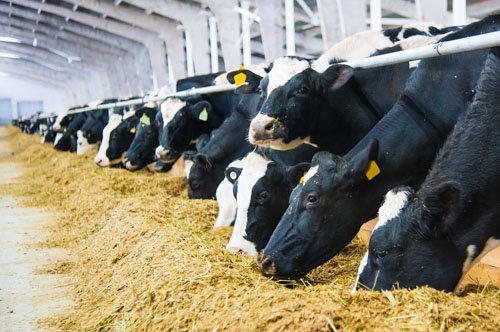Corn silage is a popular and nutritious feed for dairy and beef cattle. But making excellent quality silage requires careful management and attention to detail. One of the factors that can influence silage quality is the use of inoculants. Inoculants are products that contain beneficial bacteria that help improve the fermentation process and preserve the corn silage.
What are inoculants and how do they work?
Inoculants are special products which have beneficial bacteria, usually called lactic acid bacteria. This bacteria helps the fermentation process in corn silage better by converting sugars in the crop into acids, lactic acid. This lowers the pH of the silage, which inhibits the growth of molds, fungi and unwanted bacteria that can spoil the silage and reduce its nutritional value.
There are two main types of inoculants: homofermentative and heterofermentative. Homofermentative inoculants produce only lactic acid from sugars, while heterofermentative inoculants produce other products as well, such as acetic acid, ethanol, and carbon dioxide. The type of inoculant that should be used depends on the goal and the conditions of the silage.
When and how to use inoculants?
Inoculants are not a magic bullet which will improve silage management practices, such as harvesting at the wrong moisture or maturity, inadequate packing, or sealing, or improper feed out. However, inoculants can provide some benefits when used correctly and under certain circumstances. Some of the situations where inoculants can be helpful are:
- When harvesting corn at low moisture (<30%) or high maturity (>35% starch), which can result in slow fermentation, high dry matter losses and poor aerobic stability. In this case, a homofermentative inoculant can speed up the fermentation and reduce pH faster, while a heterofermentative inoculant can improve aerobic stability by producing acetic acid, which inhibits yeast and mold growth.
- When harvesting corn at high moisture (>70%) or low maturity (<25% starch), which can result in excessive seepage, high butyric acid levels and low starch digestibility. In this case, a homofermentative inoculant can reduce seepage and butyric acid production by increasing lactic acid production, while a heterofermentative inoculant can reduce ethanol production by converting lactic acid into acetic acid.
- When feeding corn silage during colder winter months, when yeast growth is normally minimal, a homofermentative inoculant would be the recommended choice; however, when feeding corn silage during warmer summer months, when conditions are ideal for yeast growth, a heterofermentative inoculant can reduce the growth of yeast and mold by producing acetic acid.
- When using corn hybrids with high sugar content or high digestibility, which can result in higher dry matter losses and lower aerobic stability due to rapid fermentation and higher ethanol production. In this case, a heterofermentative inoculant can help preserve more dry matter and improve aerobic stability by producing acetic acid.
Best practices when applying corn silage inoculant
The inoculant bacteria cannot move; they grow where they are placed, and therefore uniform coverage is essential for maximum effectiveness. Therefore, it is important to follow these best practices:
- Choose an inoculant that is suitable for your crop type, moisture level, maturity stage and feeding conditions. Read the label carefully and follow the manufacturer’s instructions.
- Apply the inoculant at the recommended rate and with the appropriate equipment. Make sure the equipment is calibrated and working properly. Avoid using chlorinated water or mixing inoculants with other additives.
- Apply the inoculant as close to harvest as possible. Avoid extensive delays between chopping and ensiling. Pack the silage well and cover it tightly to exclude air.
- Store the inoculant according to the manufacturer’s recommendations. Keep it away from heat, sunlight, and moisture. Use it before the expiration date.
What are the benefits of using inoculants?

Using inoculants can provide several benefits for corn silage quality and animal performance, such as:
- Reducing dry matter losses by improving fermentation efficiency and reducing spoilage.
- Preserving more nutrients by reducing protein degradation and starch hydrolysis.
- Improving digestibility by enhancing starch availability and fiber breakdown.
- Increasing milk or meat production by providing more energy and protein from the same amount of feed.
- Reducing health problems by preventing mycotoxin formation and lowering ammonia levels.
The benefits of using inoculants may vary depending on the crop conditions, the type of inoculant used, the application rate and method, and the storage and feeding management. Therefore, it is advisable to monitor silage quality regularly and evaluate animal performance to assess the effectiveness of using inoculants.
Conclusion
To recap: corn silage inoculants are products that contain beneficial bacteria that help improve the fermentation process and preserve the corn silage. There are two main types of inoculants: homofermentative and heterofermentative, which have different effects on silage quality and stability. Inoculants can provide some benefits when used correctly and under certain circumstances, such as harvesting at low or high moisture, feeding during cold or warm seasons, or using high sugar or high digestibility hybrids. To use inoculants effectively, it is important to choose the right product, apply it at the right rate and time, and follow good silage management practices.